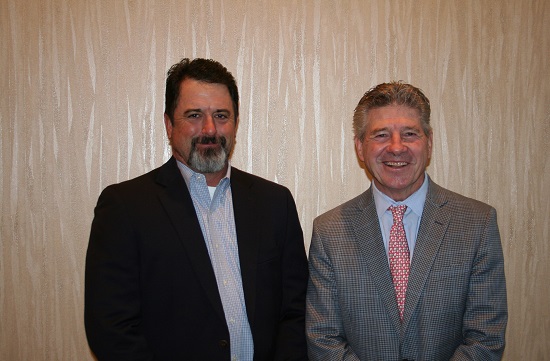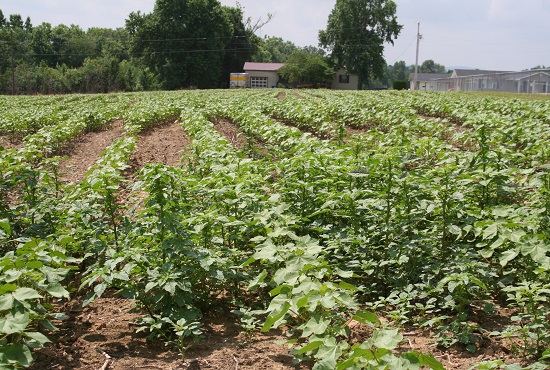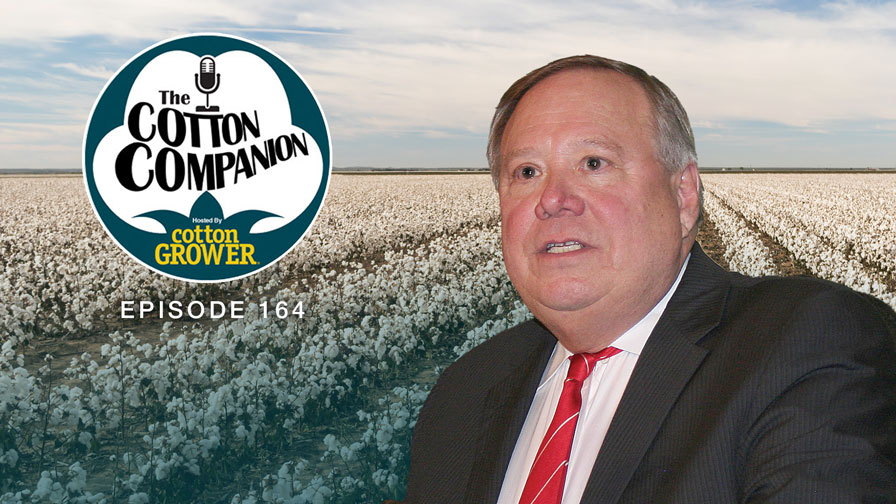Walter Priestly is 2019 Cotton Marketer of the Year
To say that Walter Priestly is a bit analytical is, well, an understatement.
“I am a spreadsheet nut,” he admits. “I have a spreadsheet for everything, including marketing, yield data, insurance calculations or balancing my checkbook – and I can access them from year to year. It may not be the most advanced way of doing things, but it works for me.”
That level of detail – and putting it to good use in his farm’s marketing strategy – earned Priestly the 2019 Joseph J. O’Neill Cotton Marketer of the Year award, presented by ICE Futures and BASF. The award, dating back to 1991, was renamed this year to posthumously honor O’Neill, long-time president and CEO of the New York Cotton Exchange (now ICE Futures).
The 2019 Joseph J. O’Neill Cotton Marketer of the Year Walter Priestly (left) and marketing consultant Jarral Neeper (right) of TruCott Commodities.
Priestly, of Robstown, TX, farms dryland cotton, grain sorghum and cattle (plus wheat and sesame if the market’s right) over four counties in the South Texas Coastal Bend. The diversified operation allows him to spread his risk in several different ways.
“Our marketing strategy is based on paying attention to details and not trying to get caught up in the top of the market,” he said. “We want to take every opportunity that’s there and not miss any. Everything is looked at on a risk versus reward strategy. If there’s no reward there for the risk, we’ll pass on by. Sometimes it’s best to do nothing.”
The trade wars created a new wrinkle to Priestly’s marketing efforts in 2019, so he relied on Jarral Neeper of TruCott Commodities to help set strategy and be an unbiased guide through the ups and downs of the year.
“Jarral is good on the marketing side, but he’s also good at looking at the world economy and balancing it with what we’re seeing at home,” explained Priestly. “You can get tunnel vision. He opened up that view and helped us make the decisions we needed to make.
“There’s a lot of good information out there,” he added. “But to be able to condense it, understand it and have the discipline to implement it is where a professional consultant can really help.”
Simply stated, Texas dryland farming can be challenging. Priestly can recall yields as high as 2,000 lbs./A and as low as 350 lb./A – variations that can take its toll on the target price he’s looking for. The farm’s diversification helps since Priestly focuses on whole farm profitability, not just marketing cotton.
“Cotton is a big piece of the pie, but it’s only one piece,” he said. “The diversification sometimes takes the pressure off making knee-slap marketing decisions. But it just takes a little more time.”
Putting It All Together
Priestly relies heavily on yield projections from his crop consultants to help drive his marketing decisions. He then puts the projections for cotton, sorghum and cattle together and tries to assign a realistic price.
From a cotton perspective, Priestly and Neeper relied on forward contracts and negotiated the terms of those contracts to be reflective of the quality of the cotton they planned to produce.
“We’ve been 100% FiberMax cotton for several years,” he said. “It produces yields and the quality that we know how to sell. We saw substantial quality premiums in the contracts we negotiated, and those premiums wiped out any negative basis.”
Neeper also suggested several option strategies, some of which they tried. “There is no silver bullet,” Priestly noted. “It’s all the little things that matter. We like to control our own destiny.”
Keeping Things Running On and Off the Farm
Priestly farms with two partners – Larry and Chris Hellmann – plus a 7-man crew of valued, long-term employees. Everyone has their jobs, giving Priestly the confidence to spend several hours each day on marketing and research.
“It’s a team effort,” he said. “We have our employees and consultants, and it all works together. I couldn’t do my job without them doing theirs.”
That comfort level also allows Priestly time for his “other career” as a steer roper on the Professional Rodeo Cowboys Association (PRCA), something he’s been involved with since 1997.
“I still enjoy it, and I’ve met a lot of great people on the road,” he said. “Now, I may be gone 2-3 weeks at the most instead of months at a time. Age has caught up with me, and I enjoy being at home.”
Home now also means travel for Priestly and his wife Brandi as they support their 13-year-old son Luke in skeet shooting competitions. He’s a reigning champion on the national level with an eye on Olympic competition (he’ll compete in the team trials this summer). And coming behind Luke is his 9-year-old brother Myles, who is every bit as competitive in the sport.
So What’s Easier?
Given the choice of roping steers or wrestling with the cotton market, steers win hands down.
“I’d rope steers all day long versus dealing with this cotton market,” laughed Priestly. “Last year was a tug of war. One day it seemed like we were destined to have a great crop and great prices. Then the market was pulled out from under us just as it quit raining. The market and our yields both hit the tank. Thankfully, some timely rainfall helped pull our yields out and our marketing strategies came together, and we ended up with a pretty good year.
“But the main thing is that no matter what we did and how good it was this past year, next year doesn’t care,” he added. “We’ll start over with a new strategy and plan based on what the market’s showing. You just have to be nimble.”









